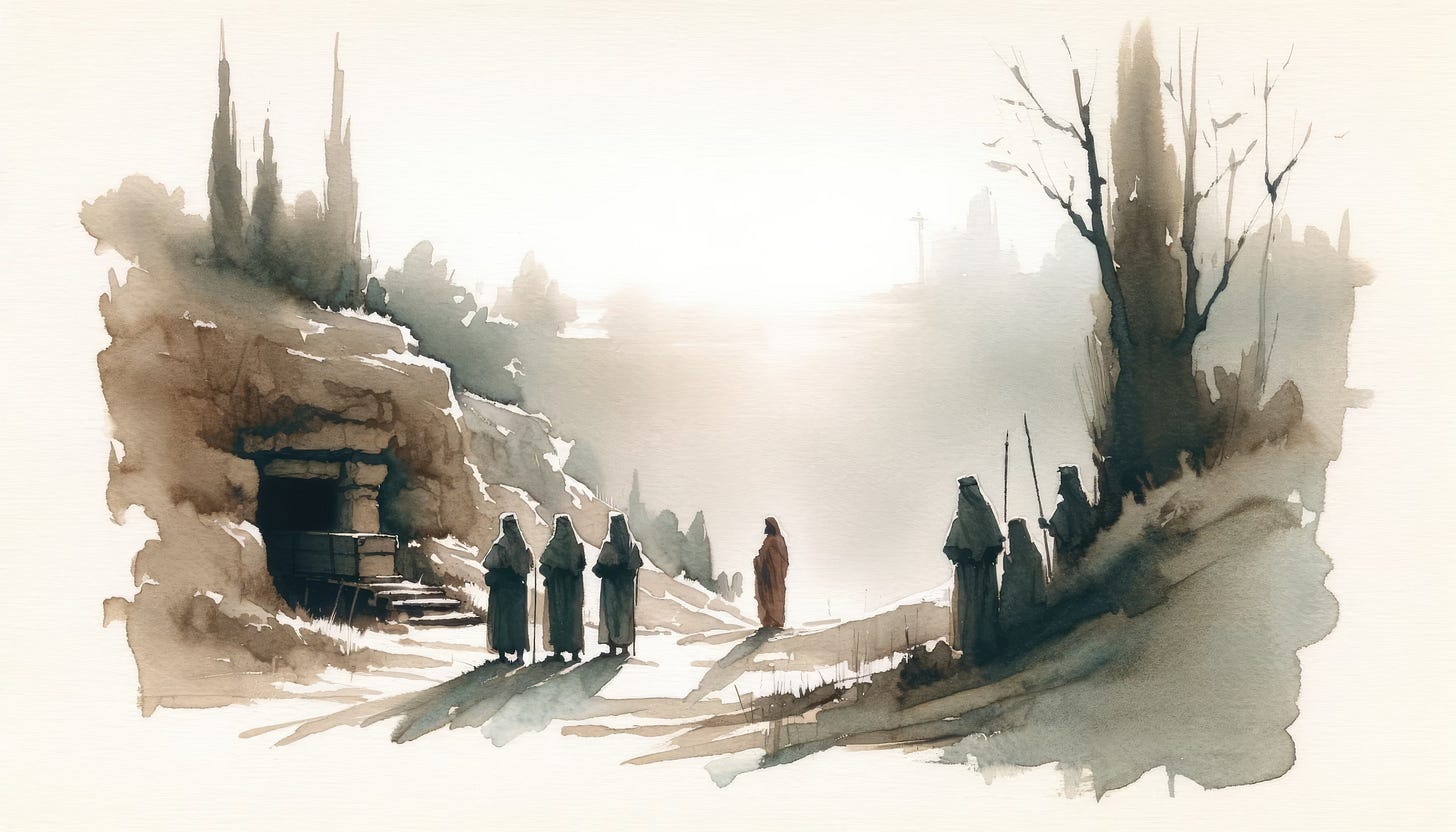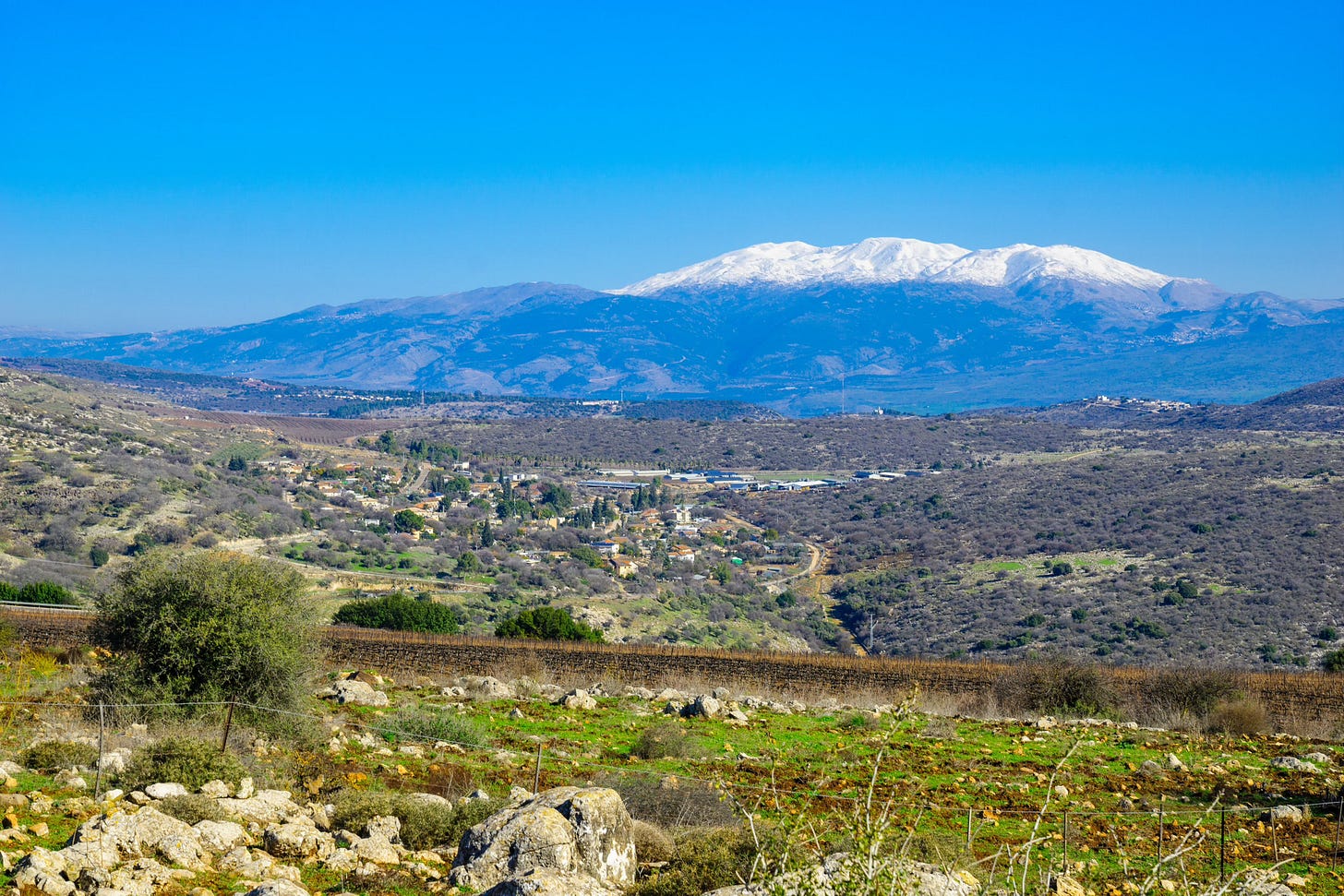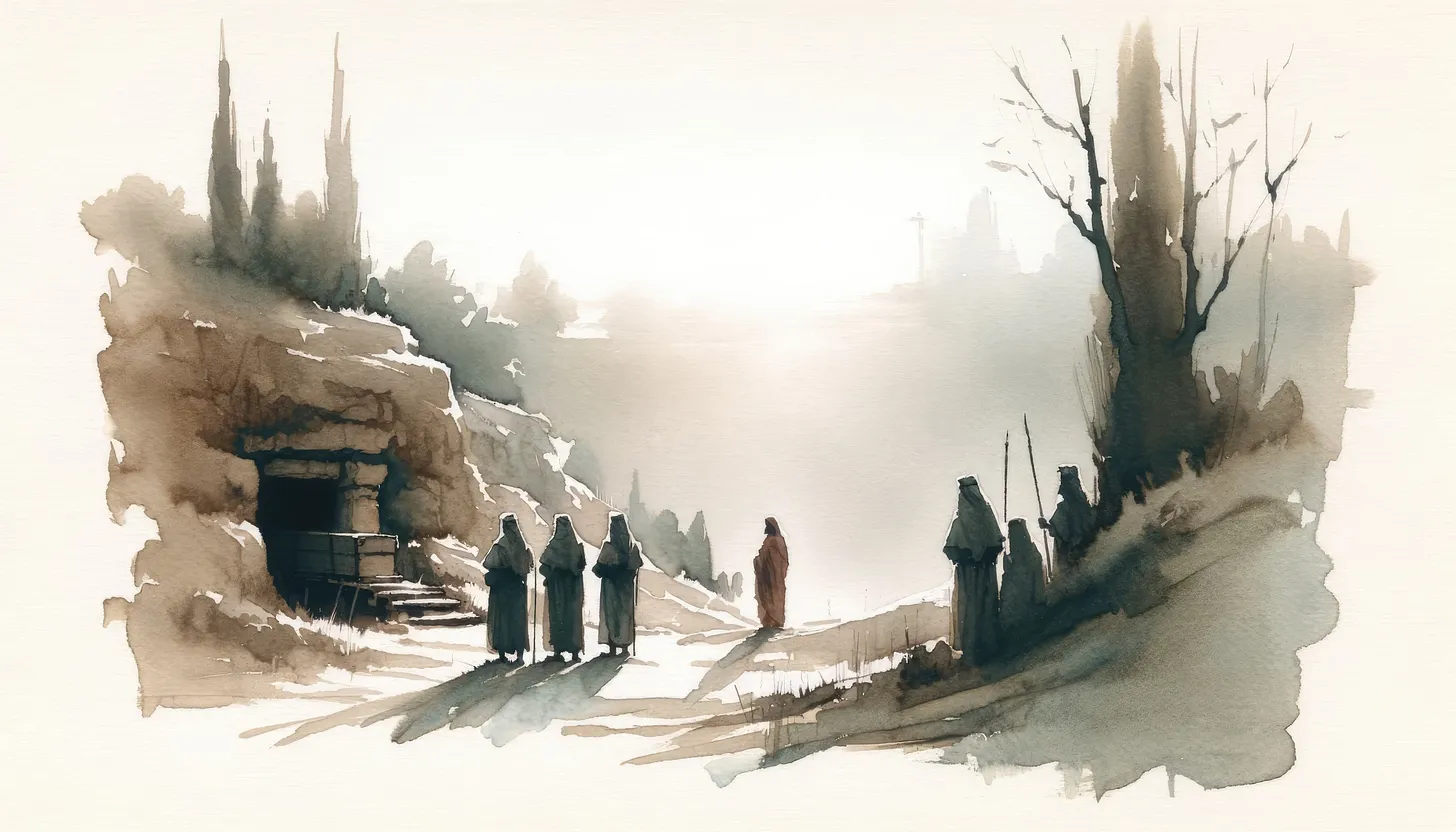What – if anything – did Jesus do between his death and burial on Good Friday and his resurrection on Easter Sunday? Why do some Christian traditions speak of him descending into hell and preaching to the spirits imprisoned there? Why do evangelicals typically not consider this a part of our Easter traditions?

Before digging into the question, allow me to quote from the New Testament – two references, one from the apostle Paul, the second from Peter. These two text comprise the foundation upon which the line “he descended into hell…” entered into the early Christian creeds.1
“This is why it says: ‘When he ascended on high, he took many captives and gave them gifts to his people.’ What does ‘he ascended’ mean except that he also descended to the lower, earthly regions? He who descended is the very one who ascended higher than all the heavens, in order to fill the whole universe.” (Eph 4:8-10; NIV)
“For Christ also suffered once for sins, the righteous for the unrighteous, to bring you to God. He was put to death in the body, but made alive in the Spirit. After being made alive, he went and made proclamation to the imprisoned spirits–who were disobedient long ago when God waited patiently in the days of Noah….” (1 Peter 3:18-20; NIV).
Once more I am heavily indebted to Fleming Rutledge in her masterful work, The Crucifixion: Understanding the Death of Jesus Christ. She write: “Of all the chapters in this book, the one that means the most to me personally is ‘The Descent into Hell’. Those occasions of Good Friday preaching became more and more a time for reflection on the relationship between the problem of evil and the crucifixion of Christ. In the end, I spent more than two years writing that one chapter. I wrote it in protest against horrors, in memory of the victims, and in solidarity with those who mourn inconsolably.”2
What does the Bible say about “hell”? It is used to translate the Old Testament Hebrew word Sheol, “where all the dead dwell – after a fashion – in a shadowy subexistent state. There is no meaningful life after death in the Old Testament world.”3She continues: “Insubstantial nonexistence in Sheol was the destiny of all; pointing us to Hezekiah writing after recovering from a serious illness.” In the New Testament we find the Greek work hades, translating the Hebrew Sheol. Again, quoting Rutledge: “…the one word, hades, comes to denote both the realm of the dead and the ruler of that realm in the New Testament. Sometimes it is imagined as a fortress barred with gates (Matt. 16:184), locked with a key that Christ has captured (Rev. 1:18). In Revelation 20:14, however, Death and Hades are personified. Both uses – Hades as realm, Hades as ruler – are valid for theological interpretation.”5
The third Biblical word, used in the New Testament, is Gehenna, coming into Greek from Aramaic – the language Jesus spoke. Rutledge again: “By the time of Jesus, this word had taken on portentous significance, for it designated the consuming fire that would follow the Last Judgment.…it shows how the imagery has moved into the realm of the cosmic…with ‘Gehenna’ being more closesly identified with the eschatological ‘hell of fire’ that would follow the final judgment (Matt. 5:22).”6
She sums up the Old and New Testament language and conceptual framework…
We have seen that two central ideas were present in the use of the three principal biblical words. In the Old Testament, the predominant concept was Sheol, a domain where all the dead, without distinction, dwell in shadow without meaning. After the exile, however, with the rise of apocalyptic literature, this undifferentiated notion was overtaken by the new concept of a judgment after death and a final separation into eternal blessedness with God for the righteous and perdition in Gehenna for the wicked. During this period the concept of a ruling Enemy developed, who could be personified as Hades, Death, Beelzebul (the “prince of demons” in Mark 3:22), or Satan, among other names.14 This was the conceptual world into which Jesus of Nazareth was born and in which he was raised.7
It is all very dark! Where is the light? After his death – in our place, bearing our humanity, and for our sin – did Jesus descend into hell/hades/Gehenna to preach to those imprisoned by death and the Ruler of the Underworld? The answer will come tomorrow! In the meantime, allow me to introduce to you another writer – Michael Heiser – reflecting on Matthew 16:13-20.8
The spiritual skirmishes against the powers of darkness are evident throughout Jesus’ ministry. One of the more dramatic is described in Matthew 16:13–20. Jesus goes with his disciples to the district of Caesarea Philippi. On the way he asks the famous question, “Who do people say that I am?” Peter answers, “You are the Christ, the Son of the living God.” Jesus commends Peter: Blessed are you, Simon Bar-Jonah! For flesh and blood has not revealed this to you, but my Father who is in heaven. 18 And I tell you, you are Peter, and on this rock I will build my church, and the gates of hell shall not prevail against it (Matt 16:17–18 ESV). This passage is among the most controversial in the Bible, as it is a focal point of debate between Roman Catholics, who reference it to argue that the passage makes Peter the leader of the original church (and thus the first pope) and those who oppose that idea. There’s actually something much more cosmic going on here. The location of the incident—Caesarea Philippi—and the reference to the “gates of hell” provide the context for the “rock” of which Jesus is speaking. The location of Caesarea Philippi should be familiar from our earlier discussions about the wars against the giant clans.

Caesarea Philippi is adjacent to the Pharpar River. Noting this geography, we can see exactly where Jesus was when he uttered the famous words about “this rock” and the “gates of hell” to Peter. Caesarea Philippi was located in the northern part of the Old Testament region of Bashan, the “place of the serpent,” at the foot of Mount Hermon. Things hadn’t changed much by Jesus’ day, at least in terms of spiritual control.…Caesarea Philippi was also called “Panias.” The early church historian Eusebius notes: “Until today the mount in front of Panias and Lebanon is known as Hermon and it is respected by nations as a sanctuary.”9 The site was famous in the ancient world as a center of the worship of Pan and for a temple to the high god Zeus, considered in Jesus’ day to be incarnate in Augustus Caesar. As one authority notes: More than twenty temples have been surveyed on Mt. Hermon and its environs. This is an unprecedented number in comparison with other regions of the Phoenician coast. They appear to be the ancient cult sites of the Mt. Hermon population and represent the Canaanite/Phoenician concept of open-air cult centers dedicated, evidently, to the celestial gods. The reference in the quotation to “celestial gods” takes our minds back to the “host of heaven,” the sons of God who were put in authority over the nations at Babel (Deut 32:8–9) who were not to be worshiped by Israelites (Deut 4:19–20; 17:3; 29:25). The basis for Catholicism’s contention that the Church is built on Peter’s leadership is that his name means “stone.” For sure there is wordplay going on in Peter’s confession, but I would suggest there is also an important double entendre: the “rock” refers to the mountain location where Jesus makes the statement. When viewed from this perspective, Peter confesses Jesus as the Christ, the Son of the living God, at “this rock” (this mountain—Mount Hermon). Why? This place was considered the “gates of hell,” the gateway to the realm of the dead, in Old Testament times. The theological messaging couldn’t be more dramatic. Jesus says he will build his church—and the “gates of hell” will not prevail against it. We often think of this phrase as though God’s people are in a posture of having to bravely fend off Satan and his demons. This simply isn’t correct. Gates are defensive structures, not offensive weapons. The kingdom of God is the aggressor. Jesus begins at ground zero in the cosmic geography of both testaments to announce the great reversal. It is the gates of hell that are under assault—and they will not hold up against the Church. Hell will one day be Satan’s tomb.
Were you there?
Until tomorrow!
Apostles’ Creed (2nd C., final form in 6th-7th century); Nicene Creed (325 AD at Nicea; 381 AD at Constantinople); Athanasian Creed (5th-6th century).
Fleming Rutledge, The Crucifixion: Understanding the Death of Jesus Christ. (Grand Rapids: Eerdmans, 2015. pp. xviii-xix.
ibid. p.399. Rutledge references Psalm 88 to describe the Old Testament expectations of Sheol, and the horrow of life after death.
More on this text below.
ibid. p. 400.
ibid. p. 401.
ibid. p. 402.
Michael Heiser, The Unseen Realm: Recovering the supernatural worldview of the Bible. Lexham Press, 2015. pp. 281-287.
Eusebius, 260–339 AD. Born in Palestine, becoming Bishop of Caesarea ca. 313 AD.



